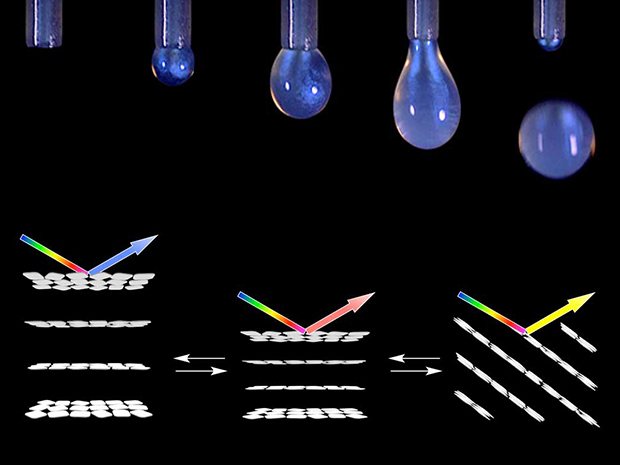But, it would seem that titanate nanosheets history of being overlooked in the catalogue of 2D substances has come to an end and thanks to a serendipitous discovery by scientists in Japan. Scientists at the RIKEN Centre for Emergent Matter Science in Japan were analysing with the substance to see if they could obtain the nanosheets to break into more stable pieces rather than the varying sizes they typically take. Unfortunately, they were not able to rectify the problem. But they did identify that when the substance was centrifuged in water, it transformed from being transparent to take on a deep purple colour.
The resulting substance, which the scientists have dubbed as photonic water is able to reflect light over the extensive range of wavelengths ever identified. From ultraviolet to the infrared, the scientists identified that the photonic water alters when exposed to magnetic or chemical forces that adjust the alignment of internal stacks of reflective nanosheets crystals. The research could eventually result in applications in lasers and telecommunications.
“When my student, Koki Sano initially informed me about the colour change on centrifugation, I could not believe it,” says RIKEN’s Yasuhiro Ishida. “I considered it was just contamination and asked him to repeat the experiment once again.”
It was but not contamination. The researchers had identified was that the centrifuge had eradicated an ionic contaminant that had blocked the organic electrostatic repulsive charge that occurs between each of the nanosheets. With such contaminant removed, the nanosheets placed each other away to create an ordered framework. It was an attractive sort of self – assembly, but the scientists had to identify out what the novel substance could do other than enable the liquid to change colour.

In the study, the scientists hit on the idea that the finest way to know what the substance is capable of is to regulate its structure and identify what happens. The scientists did this by altering the concentration of the nanosheets in the water varying from 0.50 to 0.09 percent. The results were immense. The wavelengths of the reflected light altered as they reduced the concentration.
Then the group enhanced the colour output of the photonic water by utilizing exterior magnetic fields that aligned the crystals into tightly ordered structures. Also, the scientists made tiny changes to the solution’s pH that yielded distinct green, red and blue colour changes. The liquid proved much more sensitive to pH changes than traditional pH indicators.
The colours released by the photonic water are considered structural colours as the fluid comprises nanostructures whose arrangement naturally reflect light in a way that falls into a visible wavelength range. It is not unlike how some fish are able to alter the colour. Ishida further added, “Considering its boost responsiveness and extensive colour modulation, photonic water could identify applications like near-infrared band filter in telecommunications.
Filed Under: News


Questions related to this article?
👉Ask and discuss on Electro-Tech-Online.com and EDAboard.com forums.
Tell Us What You Think!!
You must be logged in to post a comment.